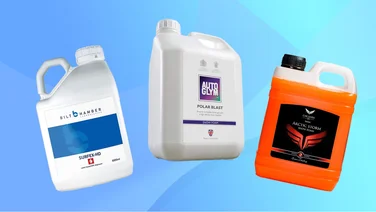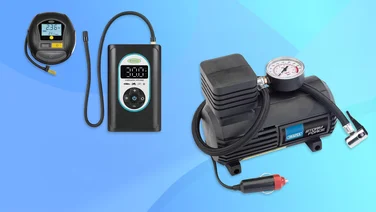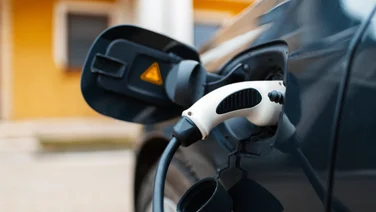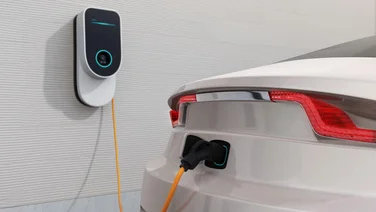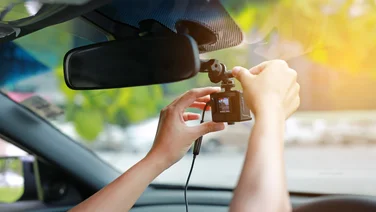To help us provide you with free impartial advice, we may earn a commission if you buy through links on our site. Learn more
- Best OBD II Scanner: At a glance
- How we test OBD-II scanners
- The best OBD-II scanners you can buy in 2024
- 1. Carly: Best OBD-II scanner for home mechanics
- 2. ANCEL BD310: Best all-round OBD-II scanner
- 3. Veepeak Mini Bluetooth Scan Tool: Best budget OBD-II scanner
- 4. Autel ML629 OBD-II Scanner: Best for checking brakes and airbags
- 5. NEXAS NexLink: Best for iPhone users
- 6. iCarsoft CR V2.0 Diagnostic Scan Tool: Best for bigger budgets
- 7. Autel MaxiDiag MD808 Pro: Best for going pro
- 8. Foxwell NT680 Pro Diagnostic Car Scan Tool: Best for workshop environments
- 9. Laser OBDII/EOBD Fault Code Reader: Best for basic fault code reading
- How to choose the best OBD-II device for you

Today’s vehicles may be festooned with exotic tech, but one of the most useful features is also one of the most underrated: the humble OBD-II port (On-Board Diagnostics). Hidden away under a plastic flap – usually under the dashboard or near the steering wheel – the OBD-II port provides garage professionals and keen amateur mechanics alike a standardised way of accessing the endless data a vehicle generates.
And by using an OBD-II scanner – a small device that plugs into this innocuous-looking socket – you can read that data to see precisely what’s wrong, so you can either set about fixing the fault yourself, or tell your mechanic exactly what needs to be looked at.
But which OBD-II scanner to buy? Capabilities and prices vary wildly, so we have tested a selection of the best devices around from very basic models costing less than £20 that only read data and faults, to hard-wearing multi-functional garage-ready professional scanners costing hundreds of pounds that help you fix the problem as well as detect and even unlock features.
Want to learn more?
Best OBD II Scanner: At a glance
| Best for home mechanics | Carly (~£100) | |
| Best budget OBD II scanner | Veepeak Mini Bluetooth Scan Tool (~£17) | |
| Best all-rounder | Ancel BD310 (~£69) |
How we test OBD-II scanners
Most OBD-II scanners on the market draw power from the vehicle’s onboard OBD-II socket, which means the only way to properly test them is to plug them into a car and get scanning.
To get the best insights, it’s good practice to scan an older, higher-mileage vehicle, as it is more likely the system will throw up a number of error codes that can then be further investigated.
What’s more, many OBD-II scanners available in the UK offer greater compatibility with some of the more common European brands, such as BMW, Ford, Mercedes-Benz and more, with some devices even allowing the user to upload code to the vehicle’s system and make changes to certain settings that would otherwise remain out of reach for anyone without the tech.
With all this in mind, we chose to test the OBD-II scanners in this guide on our own vehicles, selecting cars that fit the previously mentioned criteria and therefore allowing us to compare the depth and breadth of information each scanner delivered, as well as the ease of use when navigating the various menu screens and deciphering the often confusing error codes.
The best OBD-II scanners you can buy in 2024
1. Carly: Best OBD-II scanner for home mechanics
Price when reviewed: From £75 | Check price at MyCarly

- Great for… ease of use and comprehensive Bluetooth apps for both iOS and Android
- Not so great for… those on a strict budget – add-on options and subscriptions can mount up
Yes, there are cheaper OBD-II scanners out there, but few are as user-friendly as Carly. Basic and Premium schemes are available, the difference being that the Premium pack includes features specific to your car and, at the time of testing, was actually cheaper than the Basic offering. Smart Mechanic costs an additional £36 and, as we’ll see, is worth the money.
Documentation in the box is minimal, the unit being as close to plug-and-play as it’s possible to get, but there’s a good amount of support online. We downloaded the iOS and the Android app, added our cars through the apps – which took a couple of minutes – then plugged Carly into the OBD-II socket and had no problem connecting via Bluetooth.
We liked the clear interface and the ability to detect current and historical fault codes. The Smart Mechanic function provides thorough and easy to understand – if generic – information on 6,000 fault codes and how to fix the issues that frequently generate them. Armed with that information, you can Google that fault for your specific car.
The scanner can also check for mileage tampering, which means it could be indispensable when buying a used car, and on certain models can unlock hidden features such as activating ‘coming home’ headlights. Battery monitoring and service and maintenance reminders are the icing on a very impressive cake.
Read our full Carly review
Key specs – Wired/wireless connection: Wireless; Read DTCs: Yes; Clears DTCs, inc. MIL: Yes; Display or smartphone interface: Smartphone; Windows/Apple/Android: All; Oil service reset: Yes
2. ANCEL BD310: Best all-round OBD-II scanner
Price when reviewed: £69 | Check price at Amazon

- Great for… built-in display and controls, live telematics data and Bluetooth apps
- Not so great for… not much, although you can’t adjust the brightness of the screen
The Ancel BD310 is a lightweight mid-priced scanner with a stylish design. Providing comprehensive reports, it’s the best all-rounder on this list as it offers the best of both worlds: there’s a wired, screen-based component, but you can also connect via Bluetooth to the Ancel app – available on iOS and Android – where more features are offered. It even offers telematics data, which lets drivers see how harsh braking and acceleration affects their vehicle and their fuel consumption through a live data feed.
The Ancel BD310 doesn’t automatically detect your car’s VIN, and there’s no way of adjusting the brightness of the screen, but, that said, the price includes a vent mount, a warranty and lifetime customer service, which makes it very good value.
Key specs – Wired/wireless connection: Both; Read DTCs: Yes; Clears DTCs, inc. MIL: Yes; Display or smartphone interface: Both; Windows/Apple/Android: All; Oil service reset: Yes
3. Veepeak Mini Bluetooth Scan Tool: Best budget OBD-II scanner
Price when reviewed: £17 | Check price at Amazon

- Great for… low-cost fault diagnosis, compatibility across a variety of apps
- Not so great for… more advanced jobs
A superb budget-friendly buy, the Veepeak Mini Bluetooth Scan Tool works for both petrol and diesel OBD-II ports. Compatible with Windows and Android, the Veepeak is more of a middleman since there’s no Veepeak app. However, it is compatible with other apps – such as DashCommand, Dr Prius and Torque Pro – so drivers may need to factor the cost of an app into the total price.
The Veepeak Mini is lightweight and compact, making it handy enough to keep in the glovebox. So if you have any car trouble while away from home, you can get a reading there and then, enabling you to make a decision immediately. Reassuringly, the Veepeak Mini comes with a 30-day money-back guarantee too.
Key specs – Wired/wireless connection: Wireless; Read DTCs: Yes; Clears DTCs, inc. MIL: Yes; Display or smartphone interface: Smartphone; Windows/Apple/Android: Windows and Android; Oil service reset: No
4. Autel ML629 OBD-II Scanner: Best for checking brakes and airbags
Price when reviewed: £115 | Check price at Amazon

- Great for… reading engine and transmission data
- Not so great for… those whole prefer wireless operation
Autel is a brand synonymous with automotive diagnostic tools and it has a wide range of OBD-II devices, from basic cheaper options through to comprehensive professional machines. The Autel ML629 sits in the mid-range of its offerings, where a consumer-friendly price point meets a fair amount of functionality.
The ML629 has a wired connection and a robust design, and it’s easy to use, with soft buttons to navigate around the full-colour screen. The instructions aren’t the clearest but, with a bit of patience, the ML629 is fairly intuitive. Its library of DTCs isn’t just limited to ABS (braking) and SRS (airbags), but also covers the engine and the transmission. It’s also useful that Autel enables you to print off the information.
Key specs – Wired/wireless connection: Wired; Read DTCs: Yes; Clears DTCs, inc. MIL: Yes; Display or smartphone interface: Display; Windows/Apple/Android: Windows and Apple; Oil service reset: Yes
5. NEXAS NexLink: Best for iPhone users
Price when reviewed: £26 | Check price at Amazon

- Great for… iPhone owners
- Not so great for… we found no issues
NEXAS is another company with diagnostic scanning credentials from the commercial side of the automotive industry and this is one of the brand’s more consumer friendly devices. It’s a Bluetooth dongle, like the Veepeak above, but compatible with iOS devices and it’s weightier and made from more robust plastic as well.
Like the Veepeak Mini, the NEXAS NexLink doesn’t have its own app, so you’ll need to factor in the additional cost of DashCommand, Torque Pro, Carista or OBDFusion to get the full benefit. The device also supports motorcycles, although you may need to purchase an additional adapter.
Key specs – Wired/wireless connection: Wireless; Read DTCs: Yes; Clears DTCs, inc. MIL: Yes; Display or smartphone interface: Smartphone; Windows/Apple/Android: All; Oil service reset: No
6. iCarsoft CR V2.0 Diagnostic Scan Tool: Best for bigger budgets
Price when reviewed: £159 | Check price at LJM Direct

- Great for… advanced diagnosis and maintenance tasks
- Not so great for… smartphone users, wireless connectivity
The iCarsoft CR V2.0 is an effective tool that covers a broad range of system checks, including Oil Service Reset, Electronic Parking Brake (EPB) and Battery Management System (BMS), among others. Supporting petrol, diesel and some electric vehicles, it can store up to ten manufacturers’ data in multiple languages. You get to specify which, as you select them during setup.
The device doesn’t support smartphone or wireless connectivity – you’ll need a Windows laptop or PC to update it – but it automatically detects the car’s VIN when connected to the OBD-II port, making it very easy to use. It’s also packed with professional level features, from steering angle sensor calibration to injector coding.
The iCarsoft CR V.20 is practical, too, with a large, vivid 4in screen and solid-feeling build quality. While it’s a pricier option, if you have multiple cars in the house and you like to be hands-on, this offers great value.
Key specs – Wired/wireless connection: Wired; Read DTCs: Yes; Clears DTCs, inc. MIL: Yes; Display or smartphone interface: Display; Windows/Apple/Android: Windows only; Oil service reset: Yes
7. Autel MaxiDiag MD808 Pro: Best for going pro
Price when reviewed: £259 | Check price at Autel

- Great for… more advanced home mechanics
- Not so great for… casual fault checking
The five-foot extension cable that comes with the MaxiDiag MD808 Pro definitely makes things a lot easier when you’re trying to figure out what’s up with a malfunctioning car. Although 1.75kg is fairly hefty for a handheld device, the long cable means you can prop it up on the engine bay easily enough. The colour display is straightforward to navigate, too, and it’s readable in bright daylight.
The price on the MaxiDiag will be prohibitive for most drivers – if you simply want to save money on needless dealership trips, other devices can do that for less. However, the MaxiDiag MD808 comes into its own for home mechanics. With the ability to read DTCs and reset a variety of systems across a very broad range of cars, the MaxiDiag is incredibly comprehensive. And, for that reason, we recommend reading the manual properly before use.
Key specs – Wired/wireless connection: Wired; Read DTCs: Yes; Clears DTCs, inc. MIL: Yes; Display or Smartphone interface: Screen; Windows/Apple/Android: All; Oil Service Reset: Yes
8. Foxwell NT680 Pro Diagnostic Car Scan Tool: Best for workshop environments
Price when reviewed: £389 | Check price at Halfords

- Great for… professional mechanics based in a workshop
- Not so great for… smartphone connectivity
Acting as a replacement for the NT644 Pro, this high-end model from Foxwell is the sort of professional handheld device you might find in a small local garage, but it’s just as useful for skilled amateur mechanics and home tinkerers.
Everything you need to get started is in the handy carry-case, including the physical cable to connect to the OBD-II port. Once you’re up and running, the device offers coverage for most vehicle systems – especially for models from European, Asian and North American manufacturers – enabling you to read and clear most common DTCs, including those from the engine, SRS (airbag), ABS, automatic gearbox, central locking, climate control and more. It also allows for some more advanced fault clearing, like the ability to reset airbag warnings and change the default tyre size, as well as more advanced features, such as preparing for an EVAP test or headlamp adjustment.
We found the TFT colour display was bright and easy to use, and the device allows for the recording of live sensor data, as well as graph merging for easier fault diagnostics. This is where things get more complicated, but you’ll be amazed how much of a reference tool the internet is these days. A 16GB microSD card allows for data to be stored and uploaded to laptops later. Plus, a USB connection means the device can be updated when new software patches surface.
It isn’t the cheapest option on this list but the Foxwell NT680 is built tough, designed to withstand the rigours of a workshop environment, and there’s not much it can’t deal with.
Read our full Foxwell NT680 review
Key specs – Wired/wireless connection: Wired; Read DTCs: Yes; Clears DTCs, inc. MIL: Yes; Display or smartphone interface: Display; Windows/Apple/Android: None; Oil service reset: Yes
9. Laser OBDII/EOBD Fault Code Reader: Best for basic fault code reading
Price when reviewed: £38 | Check price at Halfords

- Great for… simple fault code reading
- Not so great for… those with less mechanical knowledge
Sometimes, a wired code reader is the simplest – there’s no annoying app to download or smartphone to pair – but the downside is that you will have to go and look up the meaning of the code, either online or in your vehicle’s manual.
Simply plug it in and it will throw up most error codes for any vehicle manufactured since 1996. It will automatically read the VIN of any car released since 2022 or thereabouts and it’s also possible to use it to turn off the malfunction indicator light (MIL) for most codes it unearths.
We tested it on a Volkswagen Transporter T5.1 with an intermittent engine warning light and it managed to hone the issue down to a fault with the diesel particulate filter, saving us some cash as we were able to order a new one and have it fitted quickly for less.
As long as you have the willingness to get ‘hands on’, you can use this cheap and cheerful piece of tech to get to the bottom of most common issues before fixing yourself. Just expect to have to do some research on the fault code’s meaning before breaking out the spanners.
Read our full Laser 7728 OBD-II/EOBD Fault Code Reader review
Key specs – Wired/wireless connection: Wired; Read DTCs: Yes; Clears DTCs, inc. MIL: Yes; Display or smartphone interface: Display; Windows/Apple/Android: None; Oil service reset: No
How to choose the best OBD-II device for you
What’s the difference between OBD and OBD-II?
On-board diagnostics evolved. Quite simply, OBD-II – also known as OBD2 – is a more advanced, more sophisticated version of the relatively short-lived OBD system. Crucially, OBD-II is now the standard access point in every new car and van sold.
Can I damage my car with an OBD-II scanner?
It’s highly unlikely. The vast majority of commercial OBD-II scanners only read the car’s data and are unable to write data back onto the car’s systems. The OBD-II socket does have the capacity to re-programme all sorts of parameters, but the software required tends to be advanced, expensive and requires significant know-how. So the risk is extremely low with the kind of OBD-II scanners we’re looking at here.
However, many do offer the ability to clear fault codes. You should take care when doing so because these errors are logged for a reason. Clearing a code without resolving the underlying issue could just mean it will reappear seconds, hours or even weeks later, and you could be storing up problems for yourself down the line.
What features should I look for?
If you have a specific issue with your car that you’re hoping to diagnose, make sure that the device you pick supports that component. It might feel a bit like eating acronym soup, what with the ABS (brakes), SRS (airbags) and TPMS (tyre pressure). However, not all OBD-II devices are created equally, and some won’t cover all of these components.If you’re looking for a wireless device, make sure the device is compatible with your phone’s operating system – most are Android-friendly but it’s worth checking which version of Android it’s compatible with. If you’re looking to clear a malfunction indicator light (MIL), ensure the device you choose enables you to clear codes.
Finally, some devices will automatically read your car’s vehicle identification number (VIN), while some will require you to type it in. Just so you know, since your car can fail its MOT test if it doesn’t meet emissions standards, you’ll see a lot being made of “i/M readiness” as a feature – this is a way of checking if your vehicle is ready for emissions testing.
READ NEXT: Best dash cams
How much should I spend on an OBD-II scanner?
Working out which OBD-II device will suit you best means figuring out what your budget is. Prices can range from £10 for the most basic devices to over £4,000 for professional tools. If you just want to check the error codes to protect yourself from the price-gouging of any yarn-spinning cowboy mechanics, then a cheaper device should be sufficient.
However, if you’re more of a home mechanic and looking to tinker, you might wish to invest in something with a bit more functionality. The good news is that prices have been coming down: with a wider range of apps able to use your smartphone’s interface to control the device, the hardware units themselves are often smaller and much cheaper to produce.
What should I avoid?
A word of warning: be wary of those cheaper, easy-to-produce hardware units. Like many electronic products, there’s a fair share of shady brown stuff out there on the market. A lot of these devices aren’t legit, often being no more than a plastic shell without any connectivity, and even if they do have connectivity, there’s a possibility the software in the app isn’t licensed or won’t be compatible with your vehicle.
You might also find, with some cheaper models, that the device indicates a fault without giving any more information unless you pay for it, creating a false economy with the initial low purchase price.
Where can I find my OBD-II port?
The diagnostics port can usually be found on the driver’s side of the car, in or about the steering wheel, down near your knees – you might need to get out of the car and crouch down since the port can be tucked away. Be aware that some ports are covered too, so you might see a finger hole inviting you to pull the relevant panel off. If you still have the manual for your specific model car, you’ll find the exact location and how to access your OBD-II port there.







